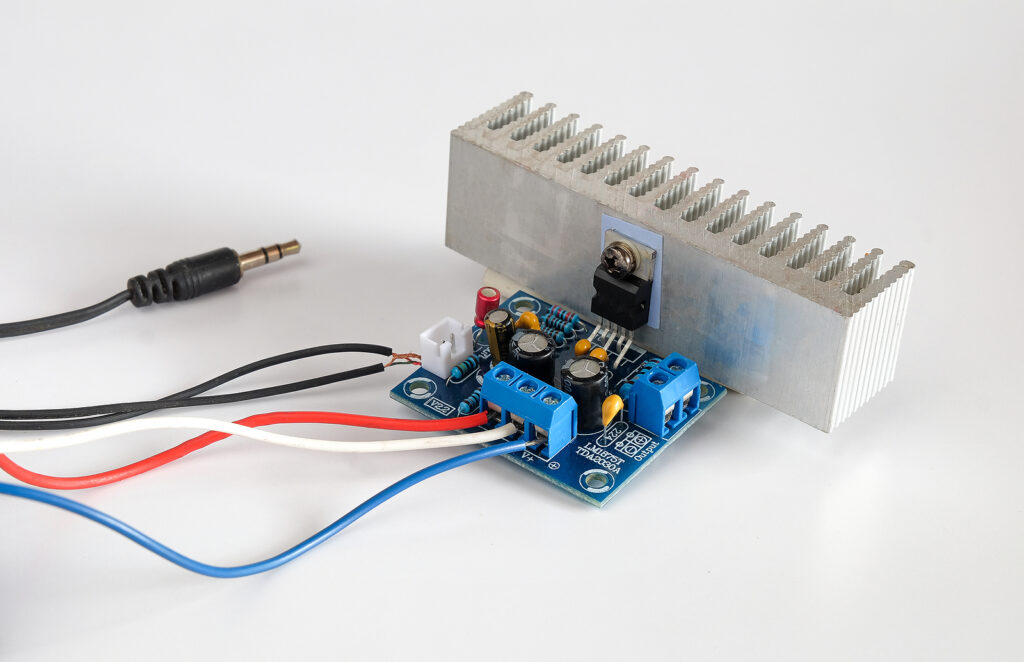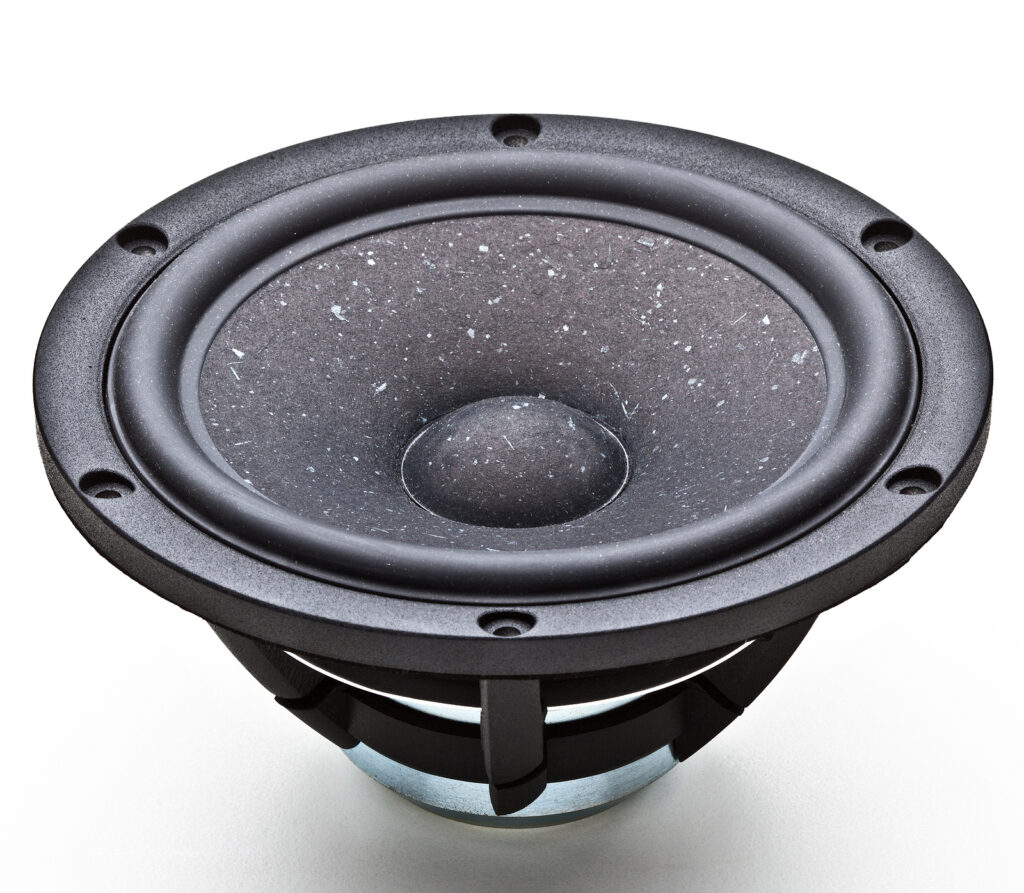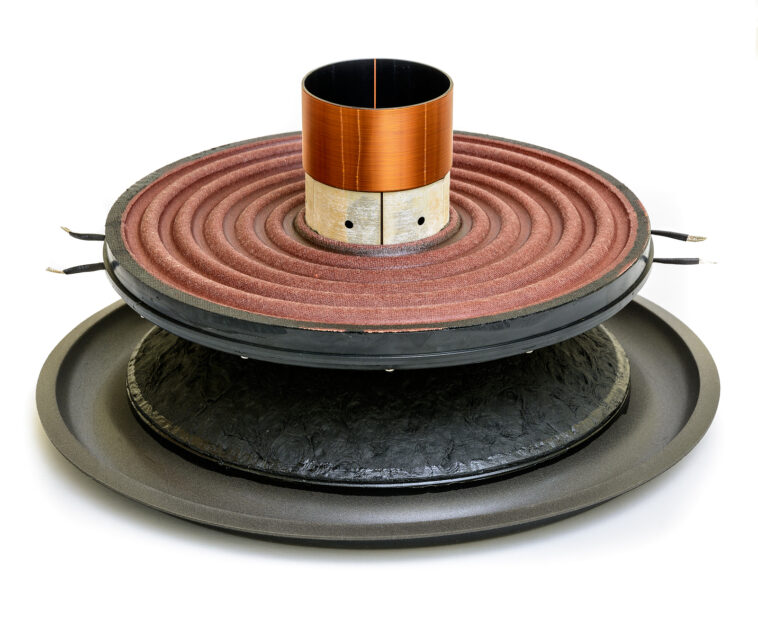DIY Bass Traps
As a passionate musician and audio enthusiast, I've always dreamed of having my own home studio where I can create music and recordings that truly shine. One crucial aspect that I've learned through my journey is the often underestimated importance of room acoustics.
Poor room acoustics can really throw a wrench into your creative process, causing frustrating echoes, unwanted reverberations, and muddying up those precious bass frequencies. That's why I decided to dive headfirst into the world of DIY bass traps, a budget-friendly solution that has transformed my studio's sound.
In this guide, I'll share my personal experience and knowledge, helping you understand what bass traps are, why they're a game-changer, and how you can craft and set up your very own DIY bass traps to elevate your home studio's acoustics to the next level.
Understanding the Importance of Bass Traps
What Are Bass Traps?
Bass traps, those vital components of acoustic treatment, serve a crucial role in optimizing sound quality within a home studio or any space where audio quality is paramount. At their core, bass traps are specialized acoustic devices meticulously designed to capture and mitigate the impact of low-frequency sound waves, including the powerful and often troublesome bass frequencies.
These bass frequencies, being heavy and long wavelengths, have a penchant for congregating in the nooks, crannies, and corners of a room. This congregation leads to acoustic issues like standing waves and room modes, which can wreak havoc on the precision and clarity of sound reproduction. In simple terms, these issues distort the intended audio experience.
Here's where bass traps step in as audio saviors. Their primary function is to absorb and dampen the excessive energy carried by these low-frequency sound waves. By doing so, they effectively prevent the accumulation of bass in problematic areas of a room, thereby promoting a more balanced, accurate, and pleasant acoustic environment.
Why Do You Need Bass Traps?
Bass traps are an indispensable component of any home studio's acoustic arsenal, serving a critical purpose in addressing a range of acoustic issues that, if left unattended, can profoundly impact the quality of your audio recordings and mixes. Let's delve into why these sonic guardians are a must-have for your studio space:
- Boomy Bass Mitigation: One of the most prevalent problems that bass traps effectively combat is the issue of boomy bass. In the absence of bass traps, low-frequency sound waves tend to accumulate in the corners and edges of your room. This buildup results in a phenomenon known as “room boom,” where excessive bass energy dominates your recordings and mixes, rendering them muddy and lacking clarity. Bass traps, through their absorption capabilities, help dissipate this excess bass energy, ensuring a cleaner and more defined low-end response.
- Resonance Control: Unwanted resonances can be a significant hindrance to achieving sonic perfection in your home studio. Certain frequencies, driven by the dimensions and materials of your room, may resonate and linger longer than desired. This can lead to frequency emphasis or cancellations, making your audio recordings and mixes sound uneven and inconsistent. Bass traps come to the rescue by attenuating these resonances, creating a more neutral and balanced acoustic environment.
- Accurate Monitoring: A crucial aspect of successful audio production lies in accurate monitoring. Poor acoustics can deceive your ears, leading to suboptimal mixing and mastering decisions. Bass traps play a pivotal role in ensuring that what you hear is a faithful representation of your audio, free from the coloration and distortion caused by room-induced anomalies. By taming excessive bass and controlling resonance, they contribute to a more reliable monitoring environment, empowering you to make precise and informed creative choices.

Materials and Tools
Crafting your own DIY bass traps can be a rewarding endeavor, allowing you to tailor your acoustic treatments to your specific needs. Before you embark on this project, it's important to gather the necessary materials and tools to ensure a successful outcome.
Materials Required
- Wooden Frames: These frames serve as the structural backbone of your bass traps. Typically constructed from 1×3 or 2×4 lumber, they provide stability and support for the insulation and fabric. Ensure they are cut to the desired dimensions for your project.
- Fiberglass Insulation: Select a high-density fiberglass insulation material specifically designed for sound absorption. This insulation material is crucial for effectively dampening sound waves and improving the acoustic properties of your space.
- Acoustic Fabric: Opt for an acoustically transparent fabric that allows sound to pass through while concealing the insulation. This fabric not only contributes to the visual aesthetics of your bass traps but also ensures their functionality in absorbing sound.
- Staples or Adhesive: You'll need staples and a staple gun or adhesive to securely attach the acoustic fabric to the wooden frames. This step ensures that the fabric remains in place and covers the insulation evenly.
- Mounting Hardware: To affix the bass traps to your studio walls, gather appropriate mounting hardware such as wall anchors, screws, and brackets. The choice of hardware depends on the weight and size of your diy corner bass traps, as well as the type of wall you'll be mounting them on.
Tools Needed
- Saw: A saw is essential for cutting the wooden frames to the precise size required for your bass traps. Ensure accuracy in your measurements and cuts to achieve a professional finish.
- Staple Gun: This tool is vital for securely fastening the acoustic fabric to the wooden frames. It provides a quick and reliable way to attach the fabric while maintaining tension for a smooth appearance.
- Measuring Tape and Level: Accurate measurements and alignment are key to the effectiveness and aesthetics of your diy corner bass trap acoustic. A measuring tape helps you determine the correct dimensions, while a level ensures that your bass traps are installed evenly and horizontally.
- Safety Gear: When working with fiberglass insulation, prioritize safety by wearing gloves, a dust mask, and eye protection. These precautions shield you from potential skin irritation, respiratory discomfort, and eye injuries associated with handling insulation materials.
DIY Bass Trap Construction
Crafting your own bass traps can significantly enhance the acoustic quality of your space. Let's dive into a detailed step-by-step guide for constructing DIY bass traps:
Building the Frame:
- Measure and Cut the Wooden Frames: Start by determining the dimensions you want for your bass traps. A common size is 2'x4′. Measure and mark the wooden lumber accordingly, ensuring precision in your cuts.
- Assemble the Frames: Once you have cut the wooden pieces to size, assemble them into frames. You can use screws or nails to secure the corners. It's crucial to ensure that the frames are sturdy and square, as this will provide stability for the entire structure.
Filling the Frame:
- Cutting the Fiberglass Insulation: Prepare the fiberglass insulation by cutting it to fit snugly inside the wooden frames. This step is vital to ensure the insulation effectively absorbs sound waves.
- Filling the Frames: Gently place the cut fiberglass insulation into the frames. Be careful not to compress it excessively, as this can hinder its sound-absorbing capabilities. Using thicker insulation will generally yield better results in absorbing lower frequencies.
Wrapping and Covering:
- Laying Out the Acoustic Fabric: Lay the chosen acoustically transparent fabric on a clean and flat surface. Ensure that it is free of wrinkles or folds.
- Positioning the Frames: Place the filled wooden frames on top of the fabric, making sure they are centered and aligned.
- Wrapping the Fabric: Fold the fabric over the frame, pulling it taut to ensure a smooth and even covering. Secure the fabric in place using staples or adhesive along the edges and corners of the frame.
- Trimming Excess Fabric: Trim any excess fabric to achieve a clean and professional finish.
Mounting Your Bass Traps:
- Determining Optimal Locations: Before mounting your bass traps, it's crucial to determine the optimal locations for their placement. Consider the acoustics of your room and identify areas where low-frequency sound issues are prominent. Corners and wall-ceiling junctions are often prime spots for bass trap placement.
- Mounting Hardware: To securely attach your bass traps to the walls or ceiling, gather the necessary mounting hardware, such as wall anchors, screws, and brackets. The type of hardware you use should be suitable for the weight and size of your bass traps and the type of wall or ceiling surface.
- Mounting Process: Install the bass traps at the identified locations, ensuring they are flush with the surfaces. Proper installation maximizes their effectiveness in absorbing low-frequency sound waves.
Placement Tips for Maximum Effectiveness
To harness the full potential of bass traps and achieve optimal acoustic results in your home studio, meticulous attention to their placement is paramount. Here, we delve into placement tips that go beyond the basics, offering a more comprehensive understanding of how to make the most of these acoustic treatments:
Corners and Wall Junctions
Begin with the fundamentals by positioning bass traps in the corners of your room. These corners are notorious for becoming hubs of low-frequency sound wave accumulation. By deploying bass traps here, you effectively quell the resonance and standing waves that tend to dominate these spaces.
Additionally, don't overlook the importance of addressing the junctions where walls meet the ceiling. These junctions are also prime spots for bass buildup. Incorporate bass traps at these junctures to comprehensively tackle low-frequency issues within your room. The combination of corner and wall junction bass traps lays a solid foundation for a more balanced acoustic environment.
Reflection Points
Beyond the corners, identify the reflection points in your room where sound waves ricochet off walls before reaching your ears. These early reflections can be a source of sonic interference and reduced clarity in your audio playback. To counteract this, strategically place bass traps at these reflection points. By doing so, you minimize the impact of these reflections, allowing your ears to perceive a cleaner and more precise sound image.
Behind the Listening Position
To further enhance your listening experience, position bass traps behind your primary listening position. Addressing rear-wall reflections is critical for creating a soundstage that is both accurate and immersive. By minimizing the influence of sound waves bouncing off the back wall, you ensure that the audio you hear faithfully represents the intended mix, devoid of unwanted coloration and distortions.
First Reflection Points:
In addition to addressing early reflections, consider placing bass traps at first reflection points along the side walls. These points are where sound waves bounce directly from the loudspeakers to your ears, potentially causing comb filtering and frequency cancellations. By installing corner bass trap acoustic dampening at these locations, you can significantly improve the accuracy and consistency of what you hear, allowing for more reliable mixing and mastering decisions.
Ceiling Corners and Clouds:
Don't forget to pay attention to the ceiling. Sound waves can also accumulate in ceiling corners and above your mixing position. Placing bass traps in these areas can help reduce ceiling reflections and enhance the overall clarity and balance of your audio environment. Additionally, acoustic clouds, which are suspended acoustic panels on the ceiling, can be used to further control overhead reflections.
Diffusion and Absorption Balance:
Consider the balance between diffusion and absorption in your studio space. While bass traps are crucial for absorbing excess low-frequency energy, it's also important to incorporate diffusers to maintain a lively and well-balanced acoustic environment. Striking the right balance between diffusion and absorption ensures that your room retains some natural ambiance while mitigating acoustic issues.

Testing and Fine-Tuning Your Acoustics
Once you've successfully installed your DIY bass traps, your journey toward achieving optimal acoustics in your studio is not complete. The next crucial steps involve assessing and fine-tuning the impact of these bass traps on your room's acoustic characteristics. To assist you in this endeavor, we provide comprehensive insights into how to evaluate and refine your acoustic environment:
Utilizing Room Measurement Software:
Take advantage of advanced room measurement software in conjunction with a calibrated microphone to conduct a thorough analysis of your room's frequency response. This method provides a data-driven approach to understanding the effectiveness of your bass traps and identifying any lingering acoustic issues.
- Frequency Response Analysis: Room measurement software generates frequency response graphs that reveal peaks and dips in the frequency spectrum. These graphs can pinpoint specific frequency ranges where problems persist, such as excessive bass resonance or uneven response. Compare the before-and-after measurements to assess the effectiveness of your bass trap placement.
- RT60 Analysis: Some software tools also offer reverberation time (RT60) analysis, which measures the decay time of sound in your room. This analysis helps assess how well your bass traps control reflections and reverb, which are crucial for achieving a balanced and controlled acoustic environment.
Conducting Critical Listening Tests:
While objective measurements provide valuable insights, the subjective experience of sound is equally important. Engage in critical listening tests to evaluate the perceptual impact of your bass traps on your audio playback:
- Bass Clarity: Focus on the clarity and definition of the low frequencies in your mixes. Listen for any improvements in the tightness and precision of the bass response. If your bass traps are effectively controlling low-frequency resonances, you should notice a cleaner and more defined bass.
- Resonance Reduction: Pay close attention to whether your room's resonances have been mitigated. Listen for any reduction in the “boominess” or unwanted emphasis of certain frequencies. Effective bass traps should contribute to a more balanced and controlled sound, minimizing the impact of room modes.
- Overall Sound Balance: Evaluate the overall balance and tonal accuracy of your audio playback. Has the installation of bass traps resulted in a more neutral and consistent sound across different listening positions? Look for improvements in imaging and stereo separation.
- Adjustments and Fine-Tuning: Based on your observations during listening tests, be prepared to make necessary adjustments to your bass trap placement or configuration. You may need to experiment with repositioning or adding additional traps to further refine your room's acoustics.
FAQs about DIY Bass Traps
What are bass traps, and why are they important for a home studio?
Bass traps are acoustic devices designed to absorb and control low-frequency sound waves, such as bass frequencies. They are crucial for improving room acoustics in a home studio by reducing issues like boomy bass, resonance, and standing waves that can negatively impact audio quality.
Can I buy ready-made bass traps instead of making my own?
Yes, you can purchase pre-made bass traps, which are available in various sizes and designs. However, making DIY bass traps can be a cost-effective way to tailor them to your specific needs and room dimensions.
What materials do I need to make DIY bass traps?
You'll need wooden frames, high-density fiberglass insulation, acoustically transparent fabric, staples or adhesive, and mounting hardware (wall anchors, screws, brackets). You'll also need essential tools like a saw, staple gun, measuring tape, and a level.
How do I construct DIY bass traps?
The construction process involves measuring and cutting wooden frames, filling them with fiberglass insulation, wrapping them with acoustically transparent fabric, and mounting them in strategic locations within your room. The article provides a detailed step-by-step guide.
Where should I place bass traps for maximum effectiveness?
Bass traps are most effective when placed in corners, wall-ceiling junctions, behind the listening position, at reflection points, and in ceiling corners or clouds. The specific placement depends on your room's acoustic characteristics and needs.
How can I test the impact of bass traps on my room's acoustics?
You can use room measurement software with a calibrated microphone to analyze your room's frequency response and reverberation time (RT60). Critical listening tests are also essential to subjectively assess improvements in bass clarity, resonance reduction, and overall sound balance.
What safety precautions should I take when working with fiberglass insulation?
When handling fiberglass insulation, wear gloves, a dust mask, and eye protection to protect yourself from skin irritation, respiratory discomfort, and eye injuries.
Can I use DIY bass traps in rooms other than home studios?
Yes, DIY bass traps can be beneficial in any space where acoustics matter, such as home theaters, gaming rooms, and even living rooms, to improve the quality of audio playback and reduce unwanted sound issues.
Are there any alternatives to DIY bass traps for improving room acoustics?
While bass traps are effective, other acoustic treatments like diffusers and acoustic panels can also enhance room acoustics. A combination of these treatments may be necessary for comprehensive acoustic improvement.
Is it necessary to continuously fine-tune my room's acoustics after installing bass traps?
Yes, achieving the ideal acoustic environment is an ongoing process. Regular assessment and adjustments may be needed to maintain optimal audio quality in your home studio or listening space.
Conclusion
By constructing and strategically placing DIY bass traps in your home studio, you can significantly enhance your acoustic environment. These simple yet effective devices absorb and control low-frequency sound waves, ensuring your recordings and mixes are accurate and professional. Don't underestimate the power of acoustics in your studio setup—investing time in improving them will pay off in the quality of your music and audio productions.
Remember, achieving the perfect acoustic environment is an ongoing process. Continuously assess and fine-tune your setup to create the best possible recording and listening experience in your DIY home studio.
Sources
https://spo.nmfs.noaa.gov/sites/default/files/pdf-content/mfr2842.pdf




